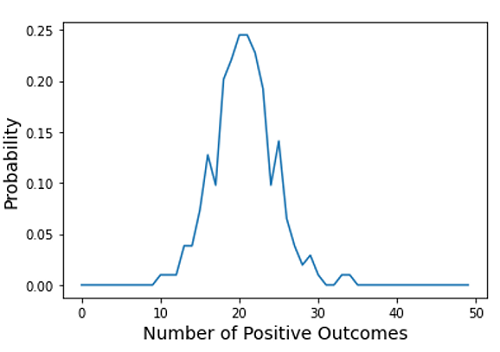Home »
Python »
Linear Algebra using Python
Python | Binomial Experiment Simulation
Python | Binomial Experiment Simulation: In this tutorial, we are going to learn about the binomial experiment simulation and its python implementation.
Submitted by Anuj Singh, on July 09, 2020
A binomial experiment is described by the following characteristics:
- An experiment that involves repeated trials.
- Each trial can only have two possible outcomes i.e. success or failure.
- The likelihood of a particular outcome will occur on any given trial that remains constant throughout the experiment.
- All of the trials are independent of the experiment.
An experiment of a series of coin tosses is a perfect example of a binomial experiment. In this article, we are going to simulate a binomial experiment using an inbuilt function numpy.random.binomial(). This NumPy library function returns a vector containing the number of positive outcomes in n number of trials.
Probability of positive outcome: 0.2
Following is the python code for demonstration and plotting Probability Distribution of Simulation Binomial Process:
import numpy as np
import matplotlib.pyplot as plt
n = 100
p = 0.2
x = np.random.binomial(n,p,size = 19)
kk = 0
kr = []
l = 0
for i in range(50):
n = 100
kk = 0
for h in range(100):
# j.append(np.random.binomial(i,p))
jj = np.random.binomial(n,p)
if jj >= i:
kk = kk + 1
kr.append(kk*(100-kk)/10000)
# it is number of head
# find the probability of number of head
print(kr)
plt.plot(kr)
plt.xlabel('Number of Positive Outcomes',fontsize=14)
plt.ylabel('Probability',fontsize=14)
Output:

Advertisement
Advertisement